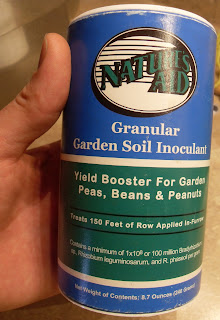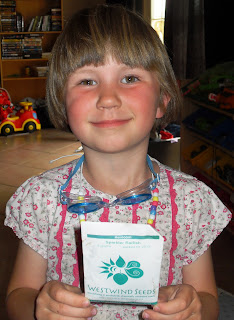Imagine that a new gardener in Tucson, AZ (USDA Zone 9a) buys some generic tomato seeds and plants all of them in mid-May. What happens? The few that grow quickly die because the odds of success are over 1,000 to 1. Will planting more seeds increase the gardener’s chances of success? Probably not much.
What will increase the gardener’s chances for success while decreasing his chance of failure is knowing and applying concepts about planting dates, climate conditions, soil conditions, what conditions help tomatoes grow best.
Each time a gardener fails at something a more insightful learning is exposed.
Here are a few things I have learned through study or plain experience about a garden’s temperature and disease that have helped me.
-Do not treat disease as a bad thing. Learning about plant disease enables the gardener to adjust his gardening practices and increase his chances of future success.
 |
| Twisted Curly new Tomato Growth |
What will increase the gardener’s chances for success while decreasing his chance of failure is knowing and applying concepts about planting dates, climate conditions, soil conditions, what conditions help tomatoes grow best.
I recently had to pull out almost half of my tomato plants because of disease. I am hoping that, over the last few years I have improved my chances of success with growing tomatoes from odds of 1,000 to 1 to closer to 30 to 1. Meaning that I fail 30 times for every 1 time I succeed. Good thing most tomato seed packets contain over 30 seeds. My success rate is much higher with plants that grow well in Tucson’s climate.
 |
| Mottled and curled leaves from Disease. |
Each time a gardener fails at something a more insightful learning is exposed.
Here are a few things I have learned through study or plain experience about a garden’s temperature and disease that have helped me.
Temperature:
- Radiant heat in winter is good. Radiant heat in the summer is bad. Walls, buildings, some trees, and plastic bottles can provide radiant heat.
- South facing slopes, walls or buildings in winter is optimal. East facing slopes or west side shade in the summer is optimal.
- Troughs or furrows in the garden keep plants cooler and wet in the summer while hills keep plants warmer and drier in the winter.
Disease:
- Once a disease attacks, remove the whole plant immediately (roots & all). This will decrease the spread of disease and hasten the time when that vegetable variety may be grown there again.
 |
| More diseased tomato plants |
- Composting diseased plant material spreads the disease. Don’t do it! Burn it or throw it away.
-Once disease hits do not plant the same plant in that soil for at least a year (or more depending upon extent of disease). Options to overcome this is to move next year’s planting location for that crop, growing other vegetable crops there, or using new soil that has never been used for growing that crop before.
- If you plant a disease-resistant variety in a diseased bed, it will most likely get the disease.
 |
| Disease can mangle a tomato plant |
- Growing legumes next to other plants or before other plants helps to increase beneficial bacteria in the soil and may decrease the chances of disease (as a preventative measure). My best success with this has been to start the legumes a few weeks before introducing my main crop. As long as they are not competing for light, experience has taught me that growing a crop of beans near other plants has only benefited the nearby plant.
- Learn about each vegetable variety you plan to grow. Know its needs, its strengths, it weaknesses, and how to combat potential problems.
- It is good to occasionally take a break from higher maintenance crops so that you can appreciate your other plants.
-Do not treat disease as a bad thing. Learning about plant disease enables the gardener to adjust his gardening practices and increase his chances of future success.
| Empty Spot where I pulled tomato plants out of the garden. |
 |
| My chances of seeing my tomatoes live may be as good as 1 in 20 |
To anyone who lives in a climate where the odds are stacked against you – I feel for you. As you find out all you can about growing things you want within your climate you will be increasing your chances of success. Everyone fails at sometime. It is only those who learn from their failures who can cut their losses and improve their opportunity for success. The more I learn about my garden, the better I increase my chances of getting something right. As Thomas Edison once said, “I have not failed. I’ve just found 10,000 ways that don’t work.”
























